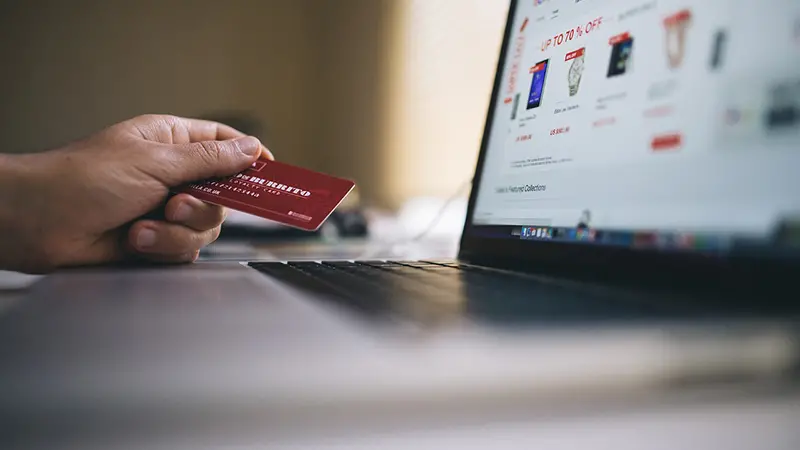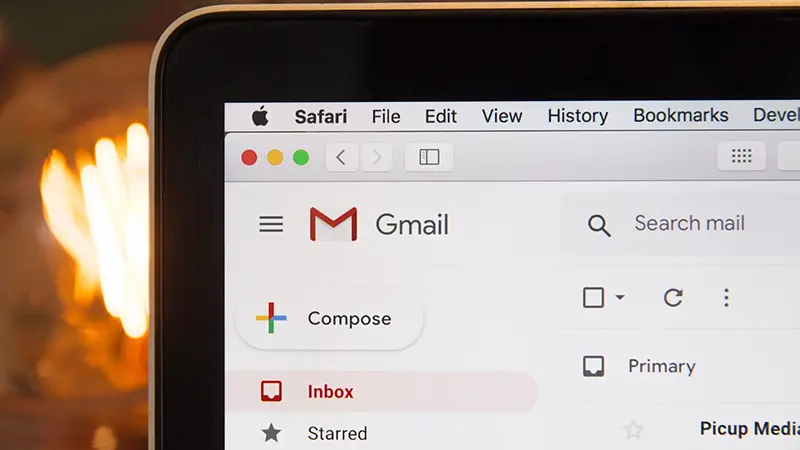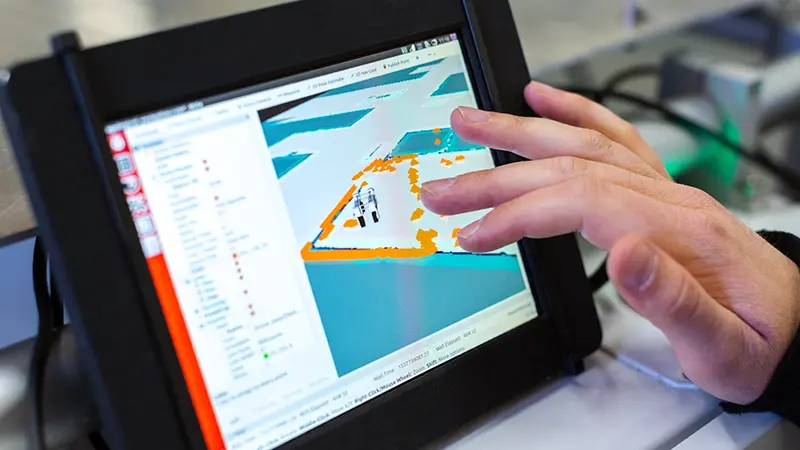Você conhece aquela sensação de ter que esperar uma eternidade por um pacote só para ele não chegar? É frustrante. Agora imagine-se do outro lado da mesa como o vendedor. Com aquele pacote perdido, sua valiosa avaliação positiva se transforma em uma solicitação de chargeback.
Como você deve saber, o Dropshipping tem sua cota justa de altos e baixos, e os chargebacks são um desafio comum que os dropshippers enfrentam com muita frequência. Sim, o dropshipping tira muita pressão dos seus ombros, já que você não precisa lidar com o estoque. Por outro lado, no entanto, os chargebacks podem rapidamente transformar suas operações tranquilas em uma potencial bagunça se não forem tratados corretamente.
Chargebacks de dropshipping são uma dor de cabeça comum para muitos vendedores. Mas não se preocupe — há medidas práticas que você pode tomar para minimizar esses problemas. Vamos mergulhar em como você pode evitar chargebacks em dropshipping, garantindo que seus clientes fiquem satisfeitos e seu negócio continue no caminho certo.

Visão geral da página:
Causas comuns de estornos em Dropshipping
Como os estornos impactam os negócios de dropshipping
Dropshipping — Como evitar estornos?
1. Verificação de qualidade — faça o básico corretamente
2. Defina expectativas adequadas
3. Confirme os pedidos dos clientes
4. Use um número de rastreamento
7. Mantenha registros completos de transações
8. Fique atento aos sinais de fraude
O que é um estorno?
Um chargeback é uma reversão de um pagamento feito por um cliente a uma empresa. Ele é iniciado pela empresa de cartão de crédito do cliente. Eles são uma maneira do cliente contestar uma taxa que ele acredita não ter sido reconhecida ou estar incorreta.
Embora o processo de estorno seja criado para proteger o consumidor, ele pode ser uma grande dor de cabeça para os vendedores, especialmente em dropshipping.
Durante um chargeback, o cliente ignora a rota usual de contato com o vendedor para um reembolso. Em vez disso, ele vai diretamente aos emissores de cartão de crédito para receber seu dinheiro de volta. Esse processo pode ser custoso para dropshippers, não apenas em receita perdida, mas também em taxas adicionais e danos potenciais à reputação de seus negócios.
Como funciona um estorno
Então, resumidamente — aqui está o que acontece quando alguém inicia um estorno contra você:
- O cliente inicia o estorno: O estorno começa quando o cliente liga para o emissor do cartão de crédito para reter ou cancelar um pagamento. Isso pode ser devido a uma série de razões, desde um item não entregue até a insatisfação com o produto recebido.
- A empresa retira fundos: A empresa de cartão de crédito procede para reter ou retirar os fundos contestados da conta do dropshipper. Além de perder o dinheiro, o dropshipper também pode enfrentar cobranças adicionais para processar seu chargeback.
- Resposta do Dropshipper: O dropshipper então precisa decidir se deseja contestar o estorno ou aceitá-lo.
- Tempo de Resposta Limitado: Se um dropshipper decidir contestar o chargeback, ele tem apenas uma janela de tempo limitada na qual pode fornecer evidências. Ele pode ter prova de entrega, registros de comunicação ou qualquer outra coisa que possa ajudar com seu caso.
- Julgamento Final: Se a decisão final for contra o remetente, ele perderá o produto, bem como quaisquer outras taxas vinculadas à transação em discussão.
Causas comuns de estornos em Dropshipping
Chargebacks podem ser um verdadeiro problema para dropshippers, e entender por que eles acontecem é o primeiro passo para preveni-los. Vamos analisar as causas mais comuns de chargebacks de dropshipping para que você possa mantê-los sob controle.
Produto de baixa qualidade
Um dos maiores motivos pelos quais os clientes solicitam chargebacks é receber um produto que não corresponde às suas expectativas. Se a qualidade do produto for ruim ou não corresponder à descrição fornecida, é quase certo que o cliente ficará desapontado. E quando os clientes sentem que foram enganados, eles geralmente vão direto à empresa do cartão de crédito para reverter a cobrança.
Em alguns casos, os clientes podem até receber produtos falsificados. Isso pode prejudicar seriamente a reputação do seu negócio e levar a mais chargebacks, o que as empresas de dropshipping preferem evitar.
Problemas de envio
Problemas de envio são outra causa importante de estornos no dropshipping. Atrasos na entrega, pacotes perdidos ou detalhes de envio incorretos podem levar a clientes insatisfeitos. Quando um cliente fica se perguntando onde está seu pedido ou recebe o item errado, ele pode se sentir frustrado. Nesses casos, ele pode ver o registro de um estorno como a única maneira de resolver o problema.
Infelizmente, mesmo quando o problema de envio está fora de controle do vendedor, ele ainda pode levar à perda de receita e taxas extras.
Falta de Atendimento ao Cliente
Um bom atendimento ao cliente é essencial em qualquer negócio, e o dropshipping não é exceção. Quando os clientes não conseguem falar com o comerciante ou sentem que suas preocupações não estão sendo atendidas, eles estão mais propensos a recorrer a chargebacks para obter seu dinheiro de volta.
Uma equipe de atendimento ao cliente responsiva e prestativa pode frequentemente resolver problemas antes que eles se transformem em estornos. No entanto, se os clientes se sentirem ignorados ou negligenciados, o resultado pode ser estornos custosos que poderiam ter sido evitados com uma comunicação melhor.
Transações Fraudulentas
Por fim, transações fraudulentas são uma causa significativa de chargebacks de dropshipping. Isso pode acontecer de duas maneiras: fraude amigável e fraude criminosa. Fraude amigável ocorre quando um cliente contesta uma transação legítima, às vezes porque se esqueceu da compra ou não reconheceu a cobrança.
Fraude criminal, por outro lado, envolve cartões de crédito roubados ou outras atividades fraudulentas. Ambos os tipos de fraude podem levar a chargebacks que não são apenas frustrantes, mas também desafiadores de contestar com sucesso.

Como os estornos impactam os negócios de dropshipping
Chargebacks de dropshipping podem ser um problema significativo para o seu negócio. De afetar sua carteira a prejudicar sua reputação, vamos explorar como chargebacks de dropshipping podem impactar seu negócio.
Financial Loss
Um dos efeitos mais imediatos de um chargeback é o golpe financeiro. O cliente que faz um chargeback pode ficar com o dinheiro que lhe deu, e você também perderá o produto. Essa é uma perda dupla — nenhum dinheiro e nenhum produto para revender.
Além disso, os estornos são acompanhados de taxas adicionais, o que naturalmente torna o impacto financeiro muito mais difícil de suportar.
Perda Operacional
Além do impacto financeiro, os chargebacks também podem drenar seus recursos operacionais. Lidar com uma disputa de chargeback leva tempo e esforço, afastando sua equipe de suporte ao cliente de outras tarefas.
Além disso, você pode precisar investir em ferramentas ou sistemas para gerenciar e evitar futuros chargebacks, aumentando os custos operacionais. Quanto mais tempo e recursos você gasta lidando com chargebacks, menos você tem disponível para focar no crescimento do seu negócio.
Danos à reputação
Os estornos também prejudicam a reputação do seu negócio. Clientes e processadores de pagamento podem ficar cautelosos em fazer negócios com você se sua taxa de estorno for muito alta. Eles pensarão que há algo errado com a maneira como você entrega produtos ou fornece atendimento ao cliente.
Como resultado, você pode ter perdas de vendas e desafios para obter bons termos de processamento de pagamento. Lembre-se, danos a um bom nome podem ter efeitos duradouros.
Relação tensa com o fornecedor
Muitos estornos podem prejudicar seus relacionamentos com fornecedores também. Se seus estornos forem frequentes, os fornecedores podem ficar hesitantes em trabalhar com você. Os fornecedores podem estar menos dispostos a se comprometer em questões como preços e termos de envio.
Um relacionamento ruim com seus fornecedores pode dificultar a execução do seu negócio de dropshipping. Isso pode afetar tudo, desde as margens de lucro até os prazos de entrega.

Dropshipping — Como evitar estornos?
Os estornos podem ser um pesadelo para empresas de dropshipping, mas há medidas práticas para ajudar na prevenção de fraudes. Seguindo essas dicas, você pode evitar a maioria dos estornos de dropshipping. Aqui está uma análise de como evitar essas situações custosas:
1. Verificação de qualidade — faça o básico corretamente
Certifique-se de que os produtos que você vende são bons o suficiente. A maior causa de estornos de dropshipping são mercadorias de baixa qualidade. Antes de listar qualquer produto, você deve pesquisar e encontrar os melhores fornecedores e seus produtos. É melhor pedir uma amostra e avaliar o produto você mesmo antes de listá-lo em sua loja.
Também é importante garantir que seus produtos estejam alinhados às expectativas do cliente, correspondendo às imagens e descrições na página.
2. Defina expectativas adequadas
Trabalhar com listagens de produtos enganosas pode levar a um impacto negativo na satisfação do cliente e resultar em estornos. Se você não criar uma listagem clara ou usar uma linguagem vaga, você pode acabar perdendo clientes.
O nome do jogo aqui é transparência. Você deve garantir que as descrições dos seus produtos sejam precisas, elaboradas e atualizadas. Não use exageros ou promessas exageradas para fechar o negócio.
Criar expectativas claras e transparentes desde o início estabelece confiança com seus clientes. Também previne qualquer falha de comunicação que pode se tornar um chargeback mais tarde.
3. Confirme os pedidos dos clientes
Antes de processar pedidos, tome uma medida extra para confirmar com seus clientes. Enviar um e-mail de confirmação rápido com um processo de verificação pode validar a precisão dos detalhes do pedido e a legitimidade do cliente. Esse pequeno ato pode ajudar você a evitar futuros pedidos fraudulentos e reduzir a ameaça de chargebacks de dropshipping.

4. Use um número de rastreamento
Outro motivo comum para estornos são problemas de envio. Para evitar disputas, sempre emita números de rastreamento assim que os pedidos forem despachados para seus clientes. Dessa forma, eles saberão que sua compra está chegando. E você terá um rastro de entrega caso algo dê errado durante o processo de envio. Além disso, fazer parceria com fornecedores de envio rápido pode ajudar a diminuir os estornos causados por itens atrasados.
Ao trabalhar com um fornecedor confiável de dropshipping e manter seu processo de envio transparente, você pode reduzir reivindicações de estorno e fraudes envolvendo pacotes perdidos e atrasados.
5. Responder a tempo
Comunique tudo em tempo hábil para evitar estornos. Isso garante que você seja facilmente contatado por seus clientes caso eles tenham algum problema com o produto. Lide com quaisquer problemas que surgirem, como atrasos ou mau funcionamento do produto, antes que o cliente os traga até você.
Um cliente que sente que não é ouvido tem mais probabilidade de pedir um chargeback. Com respostas e soluções rápidas, muitos dos problemas podem ser resolvidos antes de se transformarem em chargebacks.
6. Defina políticas claras
Deve haver regras para interação com o cliente, como devoluções e reembolsos, para que os clientes se sintam seguros ao fazer compras. Por exemplo, sua política de envio deve ser clara sobre o local de origem do produto, ETA de entrega e quaisquer atrasos potenciais. Ela deve ajudar a definir as expectativas corretas do cliente e não deixar espaço para mal-entendidos.
O mesmo vale para suas Políticas de Devolução e Reembolso, que devem especificar quando um item pode ser devolvido ou trocado. Um cronograma dentro do qual a devolução de mercadorias é considerada razoável e o processo para solicitar um reembolso
Oferecer essa transparência nas políticas ajuda os consumidores a fazer escolhas mais bem informadas, evitando assim disputas e estornos baseados em mal-entendidos.

7. Mantenha registros completos de transações
Manter registros detalhados de cada transação também pode protegê-lo de chargebacks. Guarde cópias de todas as correspondências com clientes, faturas, detalhes de rastreamento e qualquer outra documentação associada à venda.
Em caso de estorno, esses registros podem ser usados como prova para contestar a reivindicação e podem permitir que você recupere seu dinheiro.
8. Fique atento aos sinais de fraude
Nem todos os chargebacks são legítimos. De vez em quando, o cliente entrará com um chargeback para que possa obter itens grátis ou reverter transações legítimas.
Ficar de olho em possíveis sinais de fraude é essencial para proteger os dados do seu negócio e do cliente. Fique atento a sinais de alerta e atividades suspeitas, incluindo endereços de entrega incomuns (especialmente se forem de regiões de alto risco) ou quando o endereço difere das informações de cobrança. Picos incomuns no volume de compras, como pedidos grandes repentinos ou uma série de compras uma após a outra, também devem levantar suspeitas.
É importante ser proativo na prevenção de fraudes. Se as vulnerabilidades forem tratadas a tempo, você poderá se salvar de chargebacks e ameaças que podem colocar em risco seu negócio de dropshipping.
9. Utilize ferramentas de gerenciamento de chargeback
Por fim, confira as ferramentas de gerenciamento de chargeback. Essas ferramentas manuais auxiliam os dados no monitoramento de atividades suspeitas, no controle de transações, na detecção de fraudes e até mesmo na facilitação de disputas automatizadas durante chargebacks.
Você também pode fazer uso de software automatizado para agilizar as operações, diminuindo os chargebacks causados por erros manuais. Com a ajuda da tecnologia, você pode estar um passo à frente dos chargebacks e evitar danos evitáveis aos seus negócios de drop shipping.

Como lidar com um estorno
Enfrentar um chargeback é estressante, mas você pode superar esse medo e minimizar o impacto com um plano organizado. Aqui está um processo passo a passo sobre como fazer isso.
Etapa 1: responder a solicitações de estorno
Responda ao chargeback o mais rápido possível. Você não pode continuar a varrer para debaixo do tapete, achando que um dia vai melhorar milagrosamente. Em vez disso, isso pode acionar a aprovação automática, e você perderá o dinheiro.
Leia o chargeback com cuidado. Então, escreva uma resposta clara e concisa que responda às reclamações ou dúvidas do cliente. Você precisa escrever uma resposta informativa e profissional, pois ela pode influenciar muito sobre como as coisas terminam.
Etapa 2: Reúna evidências
Examine cuidadosamente o chargeback e reúna todas as evidências possíveis que você pode usar para mostrar seu caso. Por exemplo, você pode usar seus registros de remessa para mostrar onde e quando o produto foi entregue. Você também pode coletar registros de comunicação, que mostram que você teve uma conversa com o cliente e detalhes da transação. As evidências precisam ser o mais detalhadas possível.
Antes de enviar sua resposta, inclua os itens acima junto com uma explicação para cada ponto reivindicado por um cliente em seu estorno.
Etapa 3: Trabalhe com seu processador de pagamento
Seu processador de pagamento pode ser um recurso inestimável durante o processo de chargeback. Consulte-o sobre o que fazer em relação ao chargeback e siga suas diretrizes. Ele também pode esclarecer quais regras e prazos você deve ter cuidado.
Além disso, ele também permite que você analise seus relatórios de chargeback com seu parceiro de processamento regularmente. Isso pode ajudar a reconhecer padrões potenciais e evitar que instâncias futuras sejam evitadas.
Etapa 4: Monitorar e aprender
Depois de enviar sua resposta, monitore a situação. Tenha as provas necessárias em mãos se a disputa de chargeback ficar mais séria. Você também pode verificar por que o chargeback ocorreu em primeiro lugar.
Essa análise permite que você descubra problemas frequentes em seus processos de negócios e ajuda a fazer mudanças para que essas circunstâncias não ocorram novamente.

Conclusão
Lidar com chargebacks de dropshipping pode ser exaustivo, mas tomar as medidas certas ajuda a minimizar o efeito deles no seu negócio. Lembre-se, permanecer proativo é o nome do jogo.
É importante manter a qualidade dos seus produtos alta e definir expectativas com seus clientes antecipadamente. Você também deve responder imediatamente quando surgirem problemas.
Cada chargeback fornece uma oportunidade para você aprimorar seus processos, levando a interações mais significativas entre você e os clientes ou fornecedores. Ficar atento aos chargebacks ajudará você a detectar erros antes que eles se transformem em grandes problemas.
Perguntas frequentes
1. Quanto tempo leva para resolver uma disputa de estorno?
O tempo para resolver uma disputa de chargeback pode variar, mas normalmente leva entre 30 e 90 dias. Isso depende da complexidade do caso e da capacidade de resposta das partes envolvidas.
2. Quais são as consequências de estornos frequentes para meu negócio de dropshipping?
Chargebacks frequentes podem levar a perdas financeiras, prejudicar sua reputação e prejudicar relacionamentos com fornecedores. Com o tempo, chargebacks demais também podem resultar em taxas mais altas de processadores de pagamento e potenciais suspensões de contas.
3. Existem ferramentas disponíveis para ajudar a gerenciar e evitar estornos?
Sim, há várias ferramentas disponíveis que podem ajudar a monitorar transações, detecção de fraudes e gerenciar disputas. Essas ferramentas podem fornecer alertas em tempo real e relatórios detalhados para ajudar você a ficar por dentro de problemas potenciais antes que eles aumentem.







